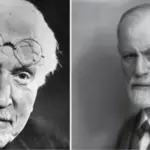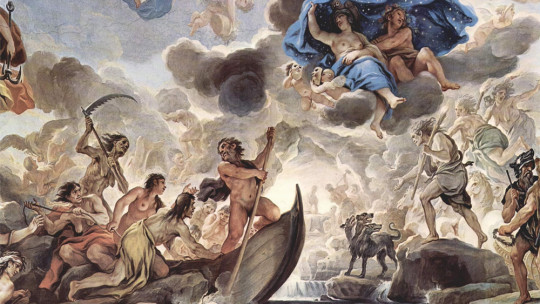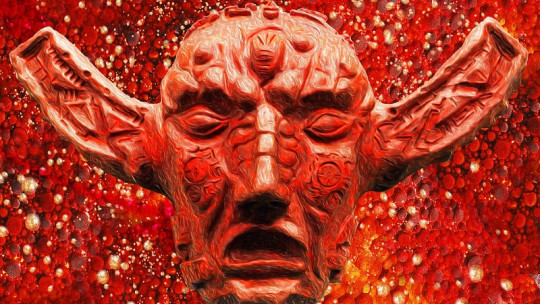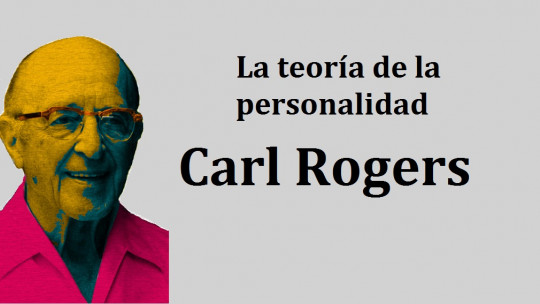
Being an autonomous, independent being capable of surviving on one’s own by adapting to the environment. Achieve one’s own identity, recognize oneself as one’s own and integrated entity. Complete the development process to become yourself. All these phrases reflect the main objective of human development: the achievement of the individuation process.
There have been many authors who have developed theories around the idea behind this concept, one of the best known being Carl Gustav Jung (father of depth or analytical psychology), who placed special emphasis on how we achieve sameness through said process. And it is on the concept of individuation that this article focuses, from the Jungian perspective, defining it and establishing its phases.
Individuation: general concept
At a general level, individuation is understood as the process by which a person becomes an integrated individual, becoming oneself and achieving the ability to be totally autonomous and independent. It is a process that requires the growth of the subject and the development of different psychic abilities, appearing throughout human development and lasting, in reality, a good part of life.
This process is especially relevant and visible during adolescence, a time when the person’s individuation makes them capable of generating their own identity, differentiating themselves from their parents and beginning to recognize themselves as their own and unique entity. For this, it is also necessary that there is belonging, a connection with the family and cultural environment that allows for a starting point and an environment that facilitates the process. All of this will allow you to generate future projects consistent with yourself as well as the possibility of connecting or disconnecting from the world in a healthy and sincere way.
The process of individuation according to Carl Jung
In accordance with the above, Carl Gustav Jung developed one of what would be the bases of his analytical psychology: the concept of the individuation process. For the author, the term individuation is conceived as a process of differentiation, constitution and particularization of one’s own essence, in such a way that the subject can discover who he or she is and allows the personality to develop. It is also identified with self-realization, being part of a natural and instinctive process towards one’s own maturation.
It is important to keep in mind that the individuation process is eminently conflictive, both in the Jungian vision and in others, since it involves the integration of contrary elements. In the case of Jung, he proposed that we are facing a process in which conflicts appeared between various opposites in the person, linked to the conscious-unconscious opposition and individuality-collectivity.
The basis of this entire process is the ego, from which we will advance in understanding the aspects denied until that moment and little by little accepting and integrating them. The contents to be developed and integrated are going to be increasingly complex and to advance in this process it is necessary to be able to identify, link and integrate opposites without identifying with them, differentiating them from the self.
In this sense, individual personal aspects will be integrated first, working on initially repressed emotional experiences given the consideration of their inadequacy or conflict or the experience of trauma, to later also integrate elements of the collective unconscious, adding to the development the elaboration of culturally inherited archetypes. Likewise, the different basic processes that make up personality will also be developed and integrated.
It is notable that there is also another conception of individuation more focused on the biological evolution of the subject, although unlike other conceptions, the individuation process proposed by Jung not limited to adolescence or childhood. In fact, each of the stages that are part of this second interpretation of the process would last around ten years each, with the process of conscious individuation not being completed until well into adulthood.
First you go through a phase in which the ego begins to be born (previously there is no awareness of individuality), later upon reaching puberty there begins to be a distance from the environment and a search for identity, adaptation to your role appears and integration of the self and finally a fourth stage in which the search for a meaning of the self occurs. It would be in the latter when there is the greatest probability that the necessary processes will occur to complete individuation.
Stages of the individuation process
The individuation process, from the Jungian perspective, takes place throughout a series of four phases through which the subject first complements its conscious and unconscious aspects and little by little it will integrate the opposites (person and shadow, conscious and unconscious). unconscious…) until reaching the sameness of the person: that is, to be oneself, a fully integrated individual.
Although in principle there are four, there are numerous interpretations and ways of dividing them even within Jungian theory, but in all of them the following are taken into account (including in this case a fifth, which would be the completion of the process).
1. Getting rid of oneself and first approach to the unconscious
The beginning of the individuation process occurs at the moment when the awareness begins to appear that one’s own consciousness is not the totality of one’s being. It begins to being aware of the existence of impulses, desires and unexpressed psychic content nor directly observable. The subject realizes that there is a large part of himself that has been ignored by himself and will try to begin to come closer to understanding it, since a moment has arrived in which his development has made him see this. need.
2. Encounter with the shadow
Once the awareness is born that there is something more in one’s own being, the first thing that is detected is that there is not only a conscious part but also an unconscious and a set of aspects that we deny by considering them negative (and that we also tend to project onto others as compensation mechanism): in other words, we begin to be aware of the existence of the duality of person (of which we are aware and which makes us feel like individual beings that relate to the outside world) and shadow (the hidden and unconscious part of person)
Once we begin to be aware of the existence of the shadow, we will need to begin to value it without judging it: our unconscious desires and impulses. They have great value despite the fact that some are socially frowned upon. It is about integrating the denied elements and one’s own personality. It is not about giving in to impulses (in fact, repression is seen by Jung as something that in a way allows the birth of consciousness), but about accepting the shadow as part of our nature.
3. Encounter with the anima/animus
The third major step in the individuation process occurs in relation to sexual archetypes. Until now the child has been integrating his/her own aspects, but now he/she must begin to integrate archetypal elements, coming from the cultural heritage, that are part of his/her personality and the community and that until then had been denied by the person. Specifically at this stage the subject begins to integrate the masculine/feminine polarity.
This process involves integrating one’s own being, in addition to the archetype identified with one’s own sex, the part of your being traditionally identified with the opposite sex, appearing a link with it. That is to say, the man must integrate the anima or feminine archetype (which corresponds to elements such as sensitivity, affection and emotional expression) while the woman does so with the animus or masculine archetype (related to vigor and vitality, strength , reason and wisdom). It is about fully integrating the sexual archetype, both logos and eros, making them mediate and being a source of creativity and inspiration.
4. The integration of the light archetype
Once the above is done, the dark and unknown areas of our psyche begin to illuminate, something that greatly expands our awareness of ourselves and can generate a feeling of narcissistic omnipotence that makes us believe superior. But the effect of reality making us see that our capabilities are not so extreme makes us “come down,” restoring our humility. At this moment wisdom and discovery appear symbolized with the magician or the wise man who gives meaning to the unknown, exploring and discovering one’s own being.
5. The end of the individuation process: coincidentia oppositorum
Little by little, moments appear in which the self appears, moments in which the understanding of one’s own being begins to exist. The process reaches its culmination when the coincidence or integration of opposites is achieved, which represents the acquisition of sameness, the end of the individuation process.
At this moment, the set of elements that make up the mind are already integrated (the conscious and the unconscious, the individual and the collective, the person and the shadow…), having achieved a fully integrated psyche. He is already himself, aware of the different aspects that are part of his being and able to distinguish and separate oneself from the world. The subject is a complete, individuated being and little by little increasingly more autonomous (being able to even form his or her own ethical system).
Its importance in the formation of personality
The process of individuation, understood as what allows us to become ourselves, It is extremely important in shaping personality. In fact, Jung himself considers individuation as a series of transformations that aims to achieve the midpoint of personality, that is, the acquisition of an intermediate point that allows us to approach the conscious and the unconscious.
We must not forget that the idea of individuation is to become oneself, integrating the different aspects of the personality and psyche into a complete whole. This means accept the presence of the different traits we have and value them, even those repressed and denied throughout life. The clearest example at the individual level is between the person (the part of our personality that we show), and the shadow (the hidden and rejected one, which remains unconscious).
Individuation allows us to be free, to develop our own way of acting and seeing the world and not limit ourselves to following the path set by our predecessors, allowing our way of being, seeing and acting to emerge independently and differentiated. In short, let our personality emerge. With this, we will be able to make a life project consistent with who we are and live our lives as the individuals that we are.








